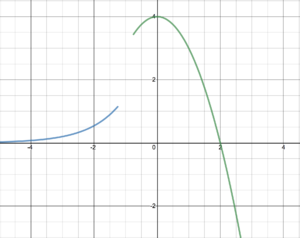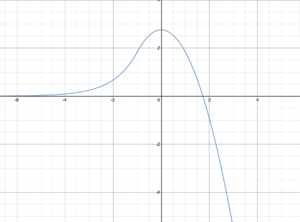Science:Math Exam Resources/Courses/MATH110/April 2019/Question 06
{{#incat:MER QGQ flag|{{#incat:MER QGH flag|{{#incat:MER QGS flag|}}}}}}
• Q1 (a) • Q1 (b) • Q1 (c) • Q1 (d) • Q1 (e) • Q1 (f) • Q1 (g) • Q1 (h) • Q1 (i) • Q2 (a)(i) • Q2 (a)(ii) • Q2 (a)(iii) • Q2 (b) • Q2 (c) • Q3 • Q4 (a) • Q4 (b) • Q5 (a) • Q5 (b) • Q5 (c) • Q6 • Q7 (a) • Q7 (b) • Q7 (c) • Q8 • Q9 • Q10 (a) • Q10 (b) •
Question 06 |
|---|
|
Consider a function that is continuous and differentiable everywhere. Assume that has ALL of the following properties:
Sketch the graph of and indicate where the inflection point(s) occur. |
|
Make sure you understand the problem fully: What is the question asking you to do? Are there specific conditions or constraints that you should take note of? How will you know if your answer is correct from your work only? Can you rephrase the question in your own words in a way that makes sense to you? |
|
If you are stuck, check the hints below. Read the first one and consider it for a while. Does it give you a new idea on how to approach the problem? If so, try it! If after a while you are still stuck, go for the next hint. |
Hint 2 |
|---|
|
A point x is an inflection point of g(x) if AND the concavity of g changes across x. A function is concave up at a point x if and similarly concave down if . This should also help with completing the sketch of g. |
|
Checking a solution serves two purposes: helping you if, after having used all the hints, you still are stuck on the problem; or if you have solved the problem and would like to check your work.
|
{{#incat:MER CT flag||
}}



















